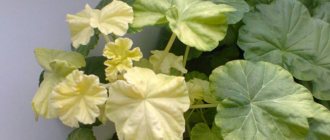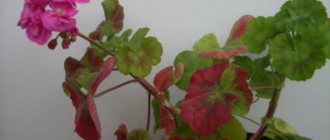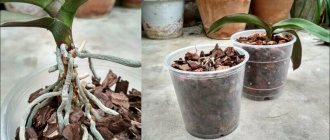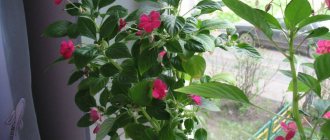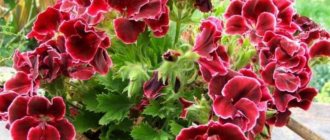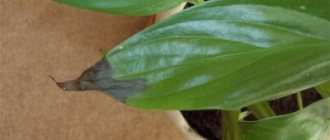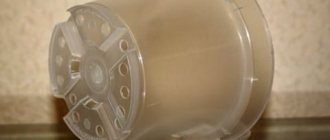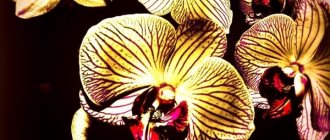Features of flowering
Flowering is a method of reproduction. During the period of swelling of flower buds, the formation of flowers, and the formation of pollen, pelargonium (and all plants) consumes the greatest amount of energy, and the processes of metabolism and absorption of useful substances are accelerated.
When and for how long does the plant bloom?
With proper care, pelargonium blooms up to 6 times per season, from spring to late autumn, opening buds again and again, which remain decorative for 20 days. The bush remains attractive for up to 5 years, and with proper care, including proper pruning and dormant periods, it can remain decorative for 10 years.
Reproduction of indoor pelargonium
Like most indoor plants, home geraniums are propagated by vegetative methods and seeds. Young specimens take root well and quickly produce the first buds.
The main problem is the risk of rotting. Therefore, cuttings are cut and seeds are planted with a reserve.
Cuttings
Growing geranium at home from cuttings is the most preferred method of propagation.
It allows you to preserve the characteristics of the mother plant and get the first buds within a few months after rooting.
Step-by-step instructions for cutting pelargonium:
- Select a shoot from the top of an adult plant. The optimal length is 7-10 cm. It must have at least 4 leaves.
- Cut the selected shoot obliquely under the bud.
- Tear off the bottom 2 sheets.
- Dry the cuttings and let them sit for 2-3 hours.
- Sprinkle the cut areas with crushed coal.
After such preparation, geranium cuttings are immediately planted in the ground. Rooting in water and creating a greenhouse is not required. This, on the contrary, increases the likelihood of rotting.
The container with the cutting is placed in a well-lit place, but protected from direct sunlight.
They begin to water the seedling only the next day. The amount of water should be minimal, just to moisten the soil.
When growing geraniums from cuttings, after 10 new leaves appear, the growing point is removed. This prevents the bush from stretching and makes it fuller.
1 month is enough for roots to form. After this period, the young specimen of pelargonium is transplanted into a permanent pot.
You can watch a video about cutting geraniums below.
Part of the trunk
If part of the geranium trunk was cut off during spring pruning, it can also be used for propagation.
Such a stump is divided into parts so that each of them has several buds.
Rooting is carried out according to the same principle as when cutting the top. After drying and sprinkling with coal, they are immediately planted in the ground. If desired, you can treat the trimmings with Kornevin.
The young specimen is not covered and they try not to flood it.
Seeds
This is a complex and time-consuming method. But many gardeners are confident that pelargonium grown from seeds blooms more abundantly than that obtained from cuttings.
Step-by-step instructions on how to grow geranium from seeds:
- Pour soil into the container and lightly moisten it.
- Carry out scarification of seeds.
- Spread the seeds on the surface of the substrate.
- Cover the container with a lid or film.
- Place in a dark place with a temperature of 22-25°C.
- After germination (after about 2 weeks), move the container to a bright place and begin to ventilate it regularly.
- After the first two leaves appear, plant the seedlings in separate containers. Keep them in a bright but cool (about 18°C) place.
- Carry out the first pinching after 6-8 leaves appear.
- Transplant young specimens into small pots approximately 10-12 weeks after planting the seeds.
The best time to plant seeds is the first 2 months of the year.
You can see how geranium seeds are prepared and planted in the video below.
Dividing the bush
During spring replanting, pelargonium can be propagated by dividing the bush. Step-by-step instruction:
- The roots are cleared from the soil.
- The flower is cut with a sharp, well-disinfected knife or pruning shears.
- The sections are sprinkled with crushed coal.
- Each of the resulting parts is planted in a separate pot.
If the geranium was healthy, it will quickly recover from this procedure and produce buds in the coming summer.
The necessary conditions
For long and abundant flowering, several conditions must be met:
- Comfortable temperature for flowering pelargonium is 22–27 degrees.
- The plant prefers tight pots with light, water- and breathable soil.
- The flower loves a lot of light, bright but diffused.
- Does not tolerate stagnant moisture; watering is rare, but abundant and regular. Between waterings, the soil ball should dry out by half.
- You should regularly pick off wilted inflorescences and yellow leaves.
- At the beginning of growth, pinch over the fifth leaf of each shoot to ensure proper formation of the bush.
- Do not overfeed with nitrogen fertilizers; potassium and phosphorus are preferable for flowering.
- Daylight hours during this period should be 12–14 hours.
Spraying the leaves is not recommended. In winter, the plant should be at rest at a temperature of 10–14 degrees. in order to accumulate strength for the next seasonal flowering. If there is no dormant period, the number of inflorescences decreases and the flowers become smaller. The bush loses its decorative effect.
Popular types and varieties
Many types of geraniums can be grown as an easy-to-care houseplant. But only a few have become most widespread; decorative varieties and hybrids with large, beautiful inflorescences have been created on their basis.
Modern classification divides geraniums into 8 groups, distinguished by characteristic external signs and care features:
- Zonal (Z);
- Ivy-leaved (I);
- Royal (R);
- Angels (A);
- Unicums (U);
- Fragrant (Sc);
- species pelargoniums;
- primary hybrids.
The last two points are of no interest to beginning lovers of indoor geraniums. They are found in the collections of breeders, botanical gardens, universities, and scientific institutions.
Species and primary geranium hybrids are not very beautiful by modern standards, although they are easy to care for. Even if such pelargoniums appear among ordinary gardeners, they will most likely get rid of them in the next season to make room for more spectacular cultivars.
But there are no Eevee hybrids in the classification, which is an omission. They are classified, depending on the nature of their growth, as Zonal or Ivy-leaved geraniums.
Since the article is intended for beginners, there is no particular point in understanding species plants - it is unlikely that a collection of indoor geraniums will begin with them. It is enough to know that in cultivation there are pelargoniums that do not require special care:
- Bordered (Pelargonium zonale);
- Ivy leaf (P. peltatum);
- Staining (P. inquinans);
- Large-flowered (P. grandiflorum);
- Fragrant (P. graveolens);
- Curly (P. crispum);
- Citrus (P. citrosum);
- Clobucha (P. cucullatum);
- Oakleaf (P. quercifolium);
- Drummond (P. drummondii);
- The most fragrant (P. odoratissimum)
- Radiant (P. fulgidum).
Zonal
Pelargonium x hortorum is the Latin name for the most common and easy-to-care pelargonium hybrids. The Russian name for this large group of indoor geraniums coincides with the species name, although in fact P. zonale is only one of the maternal taxa. The second is Pelargonium Smudge (P. inquinans).
Geranium forms an erect bush with ascending, weakly branching, succulent shoots. The leaves are dense, green, broad-heart-shaped, velvety, with shallow rounded lobes. Inside, a contrasting semicircular area is clearly visible, as if dividing the plate into two parts, which is why the geranium received the name Zonal.
The corollas are bright, collected in large hemispherical or almost spherical inflorescences, and can be simple, double, plain or of a combined color. There are 6 groups of Zonal geraniums, the first four have names that coincide with the shape of the flower:
- Rosaceae (Rose-bud);
- Tulip-shaped (Tulipe-bud);
- Dianthus (Carnation);
- Stellar;
- Cactus-flowered - with petals twisted into a tube;
- Deacon - compact bush, very abundant flowering.
Industrial series of geranium varieties are especially popular and easy to care for:
- Firewolf - with star-shaped corollas;
- Elite - small bushes, spherical, large inflorescences;
- Tango - with dark plates;
- Black Velvet – variegated;
- Bulls Eye - simple large corollas, chocolate leaves with bright green edging;
- Highfields - double inflorescences, most varieties have a contrasting eye in the center;
- The horizon forms lush caps, corollas 3-4 cm long;
- Multibloom – very abundant, very early flowering.
Ivy-leaved
Pelargonium peltatum is the second most popular after the Zonal geranium, known as ampelous or climbing. In fact, the shoots can fall in a picturesque cascade, but not curl. It got its name because of its ivy-like leaves and is undemanding in care.
The flowers are simple, with moth-like corollas. Terry buds and rounded petals are characteristic of Ivy hybrids with long, 25-100 cm shoots. They are classified as Ivy-leaved geraniums, although Zonal pelargonium also took part in their creation.
Popular variety series:
- Summer rain;
- Rich Out;
- Tuscany;
- Viva;
- Tornado;
- Summertime.
Royal
Pelargonium domesticum - Domestic or Royal geranium, created on the basis of the large-flowered pelargonium (P. grandiflorum). The bush branches well, grows up to 25-60 cm, the leaves are wide, can be whole, lobed, or serrated. The aroma is weak.
The flowers are large, 5-7 cm, from simple to double, umbrellas are about 15 cm. The corollas often have an eye shifted to the upper part, the petals have a heterogeneous color.
Caring for Royal geranium, compared to other varieties, is difficult. Flowering is the shortest, but most spectacular.
Popular industrial series of varieties:
- Aristo – semi-double corollas, bushes up to 50 cm;
- Candy - obtained by crossing with Angels, but the flowers are larger; cultivation and care in the open ground in summer are possible;
- Bermuda - geranium about 25 cm, simple corollas, 5 cm in diameter;
- Elegance - half-meter pelargoniums, buds collected in 3-5 pieces, semi-double.
There are many beautiful, but difficult to care for collection varieties of Royal geranium:
- Georgia Blush - short, pink-raspberry;
- Mona Lisa – white, blooms for a long time;
- Mandarin - coral, can be grown from seeds, relatively easy to care for;
- Sally Munro - remontant, upper petals cherry, lower petals white;
- Ann Hoistred - dark red pelargonium;
- Black Prince - burgundy with a creamy border;
- Carisbrook – soft pink with a marbled vascular pattern;
- Joy - salmon with a white spot in the center and ruffled petals;
- Morwenna - dark purple with light purple lace trim;
- Rimfire - large corollas, deep burgundy in the center, crimson edge with dark feathers.
Fragrant
Scented-leaved pelargoniums are grown for their pleasant aroma and are easy to care for. The flowers are usually inconspicuous, the bush is loose, up to 1 m, the plates are lobed, with uneven edges.
We must not forget that an indoor flower grows in a pot; pelargonium leaves are not used as a seasoning.
Natural species that are easy to care for are grown in culture:
- Pelargonium grossularioides – confectionery smell with notes of coconut flakes;
- P. moliconum – pineapple;
- P. odoratissimum – apple.
The main thing in describing varieties is the aroma:
- Mabel Gray - lemon;
- Aislinton Repermint – mint;
- Fernlife – pine needles;
- Sarah Jane - citrus;
- Brilliantine is a perfume scent;
- Fruti – fruit;
- Candy Dancer - rose;
- Lady Plymouth - menthol;
- Orange Fizz – lemon zest;
- Gemstone - lemon balm;
- Orsett – juniper;
- Clorinda – pine needles;
- Fragran - wormwood;
- Stahorn Oak – forest scent;
- Goldfruit Pride – notes of pine, mint and spice;
- Fire Ellen is a woody scent.
Angels
Angel pelargoniums is an easy-to-care hybrid of Royal and Curly geraniums. The flowers are similar to pansies, small, 1-2 in diameter, but very abundant. Bush up to 30 cm, compact, leaves small, dense.
Popular, easy-to-care varieties:
- Pavolia series - two-color corollas, bright center, blurred edges;
- Durmsden - the upper petals are cherry with a burgundy spot, the lower petals are a very pale lavender shade;
- Imperial Butterfly – white with fuchsia feathers;
- Spanish is distinguished by its flowers, which are especially large for Pelargonium Angels - up to 3.5 cm, the upper petals are dark red, fringed, the lower ones are blurred-lilac with purple feathers;
- Top Duet type – burgundy corollas with pale pink and purple vascular network.
Uniques
Unique pelargoniums were obtained by crossing the Radiant (Shiny) pelargonium with the Royal and other species. This is an old group, caring for geraniums is very simple. The bushes are tall, the flowers are medium-sized, bright, the leaves are dissected, often with an original combination of colors.
One of the main secrets of growing is that for flowering, most Unicums need a bush at least 40-50 cm high.
Easy to care for popular varieties:
- Copsorn – the smell of the leaves is spicy, the corollas are lilac with a purple spot;
- Petons - grayish plates, apricot aroma, pink flowers with a white eye and brown vascular network;
- Crimson - wine geranium with an almost black center;
- Mystery - bush up to 35 cm, purple corollas with darker veins;
- Pink Aurora is distinguished by dense caps of large dark pink flowers with burgundy spots, the leaves are crinkled.
How to care?
Caring for the beautiful pelargonium is not difficult, but it must be done regularly.
Caring for a plant includes several mandatory conditions:
- do not overdo it with watering;
- carry out timely pruning;
- observe a rest period in winter;
- feed regularly in spring and summer;
- observe light and temperature conditions.
Watering
From spring to autumn, you need to water the flower when the clod of earth is half dry, this is approximately once every 7-10 days, without touching the leaves and flowers. Excess water from the pan should be removed. No need to spray. If the air in the room is dry, place a bowl of water next to the pot. In winter, water only when the soil is completely dry.
Do not use hard water for irrigation. Replace with boiled or bottled water.
Light mode
From spring to early autumn, pelargonium should be placed on southern and south-eastern windows. Daylight hours are 12–14 hours. In this case, direct sun should be avoided. The light should be diffused . To do this, you need to move the pots a meter from the window and shade the flowers with transparent curtains. In winter it is a bright place with short daylight hours.
Feeding
After planting, pelargonium can be fed with nitrogen fertilizers so that the bush increases its biomass. During the flowering period, it should be fed 3 times a month with potassium-phosphorus fertilizers. You can use a fertilizer produced specifically for pelargoniums or for flowering plants. In winter, the plant does not need to be fertilized.
Temperature
Spring – summer – early autumn, when pelargonium blooms, the optimal temperature is 22–27 degrees. In winter, at rest, 10–15 degrees.
Trimming and pinching
Before winter, pruning or pinching should be done. As a rule, young plants are pinched. This is done like this: the top of each shoot is pinched or cut off so that 5 leaves remain on the shoot. Bushes older than 2 years are regularly pruned. This is a very important procedure for abundant flowering:
- forms a beautiful bush;
- increases the number of inflorescences;
- prolongs flowering time.
Pelargonium is trimmed immediately after flowering in two ways:
- up to the 7th dormant bud;
- up to 3 buds, that is, per stump.
The choice of method depends on the condition of the bush. Young bushes can be pinched up to the 7th bud. Bushes that have become woody are pruned into a “stump.”
Before pruning, the plant should not be watered so that juices do not ooze from the cuts. Disinfect the cut areas with brilliant green or charcoal. After pruning, do not water for 1-2 days, then water and place in a bright place. The plant may have to be pinched in the spring; during the winter, if there is insufficient light, it may stretch out.
Rest period
Pelargonium is at rest from December to early spring. She does not need feeding at this time. During this period, plants are watered only when the earthen ball dries out completely. Pelargonium grows well and develops in winter, growing branches and leaves. The temperature should be at least 7 degrees, there is a lot of light, the daylight hours are short.
Rules for pruning and replanting
Mandatory procedures for caring for geraniums are pruning and replanting. Pinching is carried out in autumn and spring. Each period has its own characteristics.
Spring pruning
In spring, the procedure is carried out at the end of winter or beginning of spring using a sharp, disinfected knife. Light pruning promotes the change of greenery and the formation of flower stalks. Even light pinching delays flowering for several weeks, but the flowers turn out lush and large.
Too intensive pruning can prevent the formation of inflorescences this year, so do not overdo it.
Autumn pruning
In autumn, geraniums are pruned after flowering is complete. First, remove dried inflorescences, leaves and stems. Then the branches that are too long and weak are shortened and the plant is given the desired shape. Professionals recommend shortening the shoots by 1/3 before the dormant period. In winter, geraniums are not pinched.
Transfer
Transplantation is an equally important detail of care. It is carried out every two years before the beginning of the active growth phase (in spring). The following points should be taken into account:
We choose a container 1.5-2 cm larger than before.
The soil used is a mixture including sand and universal substrate (or garden soil) in a ratio of 1:2. Drainage is placed at the bottom.
After transplantation, the plant is fertilized with potassium or potassium-phosphorus fertilizers.
For better rooting, place the flower in a warm room with diffused sunlight.
What to do to make geraniums bloom? Do not neglect such important procedures as replanting and pruning, and the plant will delight you with its beautiful appearance.
Why does the crop produce only foliage at home: reasons
Pelargonium is unpretentious, but under some circumstances it does not form buds and does not bloom. What's the matter?
- Pot too big. Pelargonium, planted in a large container, gives itself the command to grow roots to fill the free space with them, and it will spend all its energy only on this. You can plant several plants in a large pot so that they are crowded and compete with each other, then flowering will begin quickly.
- Lack of fertilizing. The soil in the pot is quickly depleted. Regular feeding is required for lush flowering. Balanced fertilizers can be purchased at the store. The bush should be fertilized up to 3 times a month. The flower responds well to feeding with iodine: 1 drop per liter of soft water. 50 ml of solution per feeding.
- Overmoistening of the soil. The flower cannot stand this, the roots begin to rot. The plant may shed its leaves or even die.
- The soil is not suitable. Pelargonium cannot develop normally in heavy, clayey soils that retain water for a long time. The soil should be light, permeable, with a neutral acidity level. It is best to use ready-made substrate for pelargoniums from the store.
- Improper wintering conditions can prevent flowering. During the dormant period, temperature and light conditions should be observed so that the plant can gather its strength.
- No trimming. This procedure stimulates long and lush flowering. It should be held every autumn.
- Without replanting for more than 2–3 years, the plant will refuse to bloom.
- Lack of light and length of daylight hours is one of the important factors for the lack of flowers.
Why doesn't geranium bloom, but only produces foliage?
Why anthurium does not bloom at home and what to do
The reasons for this may be the following factors:
- Incorrectly selected pot. If the container is cramped, the roots will devote all their energy to the growth of new shoots rather than the formation of flowers. In a cramped pot, the plant begins to actively grow upward; the leaves are large, but sparsely spaced.
- Incorrectly selected fertilizers and violation of the feeding schedule. If you fertilize the plant too often, it will cause the leaves to grow quickly. Flowering may not occur due to lack of nutrients.
- Excessive moisture. Despite the fact that geranium loves moist soil, frequent watering leads to the formation of green mass without buds. In autumn, the plant needs to be watered less frequently, otherwise this may also negatively affect the appearance of inflorescences.
- No trimming. With a large accumulation of shoots, the root system does not have enough nutrients to bloom. It is especially necessary to carefully monitor the appearance of young shoots, which can take away all the strength of an adult bush.
- Root damage. Root diseases lead to a lack of buds and can contribute to the death of the plant.
- Lack of light. In the shade, the plant will reach for the light and become weak. Such bushes almost never bloom.
- Pest infestation. Insects reduce the vigor of the plant, so it cannot bloom.
- Low air temperature. Such situations arise in winter. Geranium tolerates hot conditions well, but a decrease in temperature can lead to a lack of flowering.
Why doesn't it bloom, but only forms foliage?
Some plant varieties have their own characteristics. For example, the question often arises as to why royal geraniums do not bloom. This variety, unlike other varieties, has a lush bush that requires special pruning and care. Flowering of a crop may not begin for the following reasons:
- due to lack of light;
- if the pot is too large;
- with frequent and incorrect pruning;
- if the plant is not transplanted into new soil in a timely manner;
- placing the geranium in the shade - in this case, the buds form, but fall off without blooming.
Why doesn't royal geranium bloom?
Important! To choose the optimal place in the house for growing geraniums, you need to move the pot. Very often, after a change of location, the plant begins to actively bloom.
What to do to make it bloom profusely?
In order to force pelargonium to bloom, it should be placed in conditions under which it will be forced to form buds, creating a stressful situation for it. First you need to analyze the conditions in which the flower grows, the shortcomings must be eliminated.
If the lack of flowering is not clear, there are several stress techniques to stimulate pelargonium flowering :
- Radical pruning . This measure allows you to increase the number of side shoots and stimulates the formation of flower buds.
- Temperature stress . Take the flower to the balcony or plant it in the garden so that there is a difference between day and night temperatures.
- Feeding with iodine . This is the simplest and most economical way to provoke pelargonium to bloom. For 1 liter of water, 1 drop of iodine (alcohol solution from a pharmacy). Florists advise dissolving iodine in heated water. The solution is thoroughly mixed. 50 ml of the solution is added to the already moist soil of the pot, away from the roots, closer to the walls. This procedure should be carried out once every 3-4 weeks.
- Transplant . This procedure stimulates flowering well. The correct selection of pot, soil, as well as placing the flower in a dark place after transplantation for 1-2 days will force the formation of buds.
Nowadays, varieties of pelargonium of compact shapes, with flowers of various shades, have been developed. If the necessary conditions are created and regular care is taken, the flower will delight you with lush blooms from spring to late autumn.
How to make geraniums bloom - tips and tricks
In order for geraniums to successfully lay buds, you should know some tricks. They will help achieve active budding.
- If several plants are planted in one bowl, in the spring the top layer of soil (3 cm) is replaced with fresh one. This will help increase the amount of nutrients.
- Non-flowering geraniums can be moved to different windowsills in search of optimal lighting conditions. However, after the buds appear, the plant should be left in one place, without moving it or changing the position of the leaves, as this may cause the flower buds to drop.
- A good fertilizer for geraniums is wood ash. The solution is prepared simply - for this, 1 tablespoon of ash is infused in 1 liter of water, which is then drained. To feed the plant, you need to take 1 spoon of infusion and dilute it in the required amount of water. By the way, this fertilizer is also used to prevent aphids.
- Pinching the tops of the stems after setting the buds will help the geranium direct all its energy to flowering, and not to the growth of foliage. It is also recommended to promptly remove faded buds so that they do not draw out nutrients.
Flowering stimulation - replanting
Annual spring replanting of geraniums according to the standard scheme will have a positive effect on flowering:
- A layer of drainage is placed at the bottom of the prepared pot;
- The plant is removed from the old pot along with the earthen lump, then the soil must be carefully removed;
- The root system of the flower is inspected for rot and damage;
- If suspicious roots are identified, they are cut with a sharp knife or scissors, and the cut sites are treated with crushed activated carbon;
- The root system of the geranium is placed in a new pot, and the voids between the walls are filled with a slightly moistened soil mixture;
- Then the soil near the trunk is compacted with fingers, the entire soil is watered abundantly;
- After this, the geranium should be placed in a dark place for 1 week, then moved to a light windowsill.
After transplantation, pelargonium does not need feeding for 2-3 months. Otherwise, caring for the plant remains the same.
